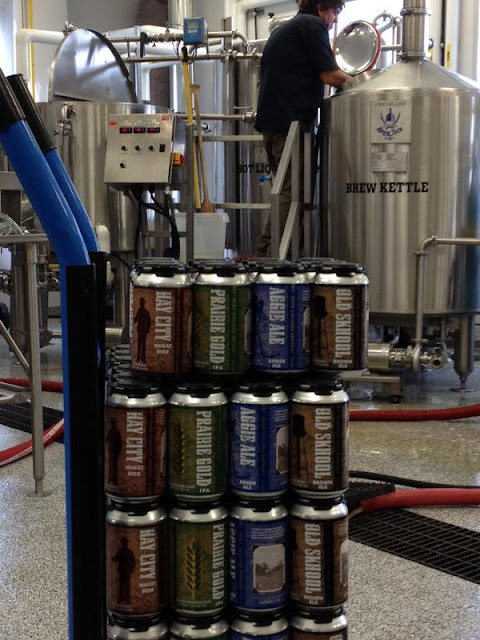Growing malt barley is a bit tricky and a bit stressful. The factors that the malt processors take into consideration are :Germination :Chit :Protein :Plump and Moisture. If any one of these isn't in the right specs there is a good chance it will be rejected.
Germination is the percent of the barley seed that will actively grow. This is important as the barley is sprouted to start the fermentation process. Chit is similar but it is when the germ end of the seed is cracked and over time the seed may lose germinating ability. This is tested by pearling the seed to expose the germ end.
Barley grows quite easily as you can see from this photo. This is a head that broke off on the moist ground and grew last year.
Protein levels in barley are tested because of how it changes the characteristics such as color when it's made into beer. Lower is better, usually under 11.5. The weather can play a huge part in this as when it's dryer during the summer the seeds are smaller(less plump) and this can drive protein up and cause it to be rejected.The factor we control is the amount of Nitrogen fertilizer applied. I soil test and only put on what is needed so as not to increase protein levels. Plumpness is important because the more plump the kernel the higher the malt yield.
 Seed moisture is easily controlled by threshing only at 13.5% or lower. This helps with the health of the seed in the bin if in long term storage which can happen with malt as you deliver when they are ready for it. This is the stressful part. We take this crop off in late August or early September lots of years and have to keep it in good condition for close to 1 year in some instances. It can lose germ especially if chit is high and can spoil or heat if not looked after correctly. The day it goes to the maltsters is a relief but I don't celebrate till It's been unloaded and all is good.
Seed moisture is easily controlled by threshing only at 13.5% or lower. This helps with the health of the seed in the bin if in long term storage which can happen with malt as you deliver when they are ready for it. This is the stressful part. We take this crop off in late August or early September lots of years and have to keep it in good condition for close to 1 year in some instances. It can lose germ especially if chit is high and can spoil or heat if not looked after correctly. The day it goes to the maltsters is a relief but I don't celebrate till It's been unloaded and all is good.
Malt barley has been an important part of the crop rotation on my farm for many years. It helps break disease cycles of other crops like wheat and canola and even peas. It helps the soil by adding large amounts of organic matter in some of my lighter land. It works out well in a Soybean or Pea/Wheat/Canola/Barley rotation giving me another cereal grain option.
 |
| Malt Barley being grown(sprouted) at Alix |
For many years I've sent my barley to Rahr malting in Alix, Alberta. They have become a go to place to source malt blends for large breweries and also many of the small craft brewers popping up all over North America. I'm proud to farm in an area that is world renowned for some of the best malt barley. When I meet a new brewer at a function and I ask them where they get there barley from and they say Rahr I can't help but get a smile on my face as I tell them that they may have even used some barley from my farm.
 |
| Olds College Brewery uses barley from Rahr |




